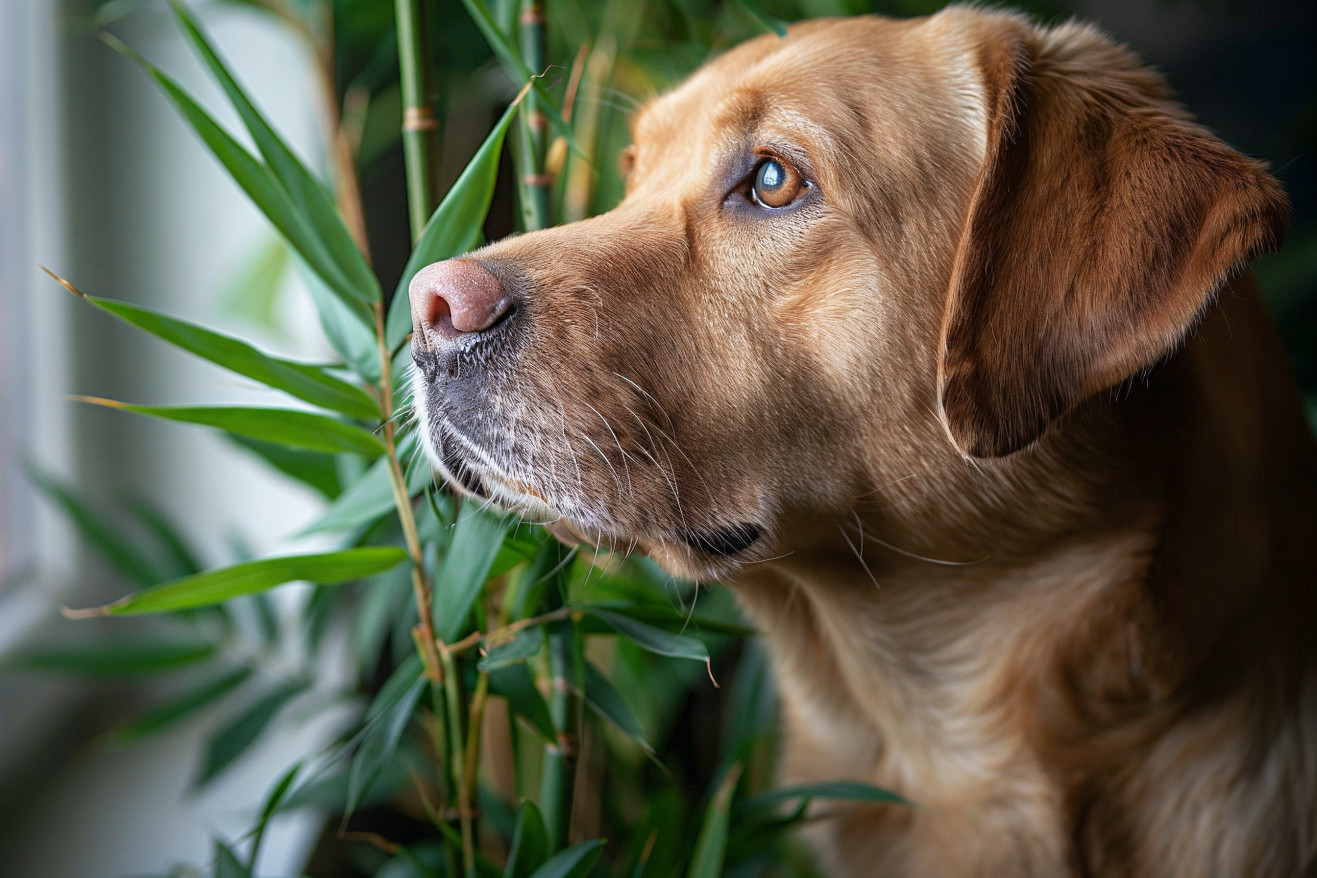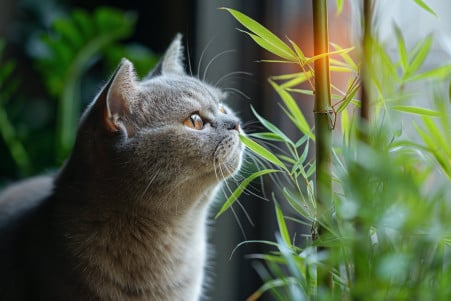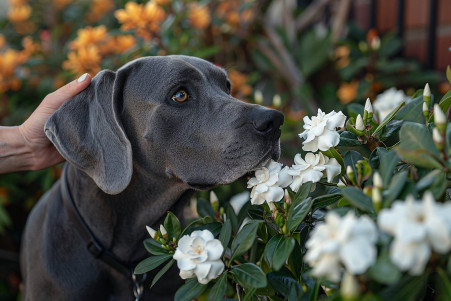Is Bamboo Toxic to Dogs? An In-Depth Scientific Analysis
4 May 2024 • Updated 2 May 2024

Bamboо is a common landscaping plant, but pet owners may be concerned about whether its dense shoots and large leaves are toxic to dogs. Despite its tough exterior, bamboo contains several toxins that can lead to serious stomach and digestive problems in dogs if eaten, from mild stomach upset to potentially life-threatening internal bleeding.
To get a comprehensive understanding of the plant's toxicity, we will explore independent research from veterinary toxicologists, horticultural scientists, and peer-reviewed clinical studies. This collective analysis will offer insights into the various toxic compounds, their severity of impact on dogs, and best practices for preventing accidental ingestion.
Is bamboo toxic to dogs?
Nandina and Heavenly Bamboo: Toxic Bamboo Varieties
Two of the most common toxic bamboo varieties are sacred bamboo (Nandina domestica) and heavenly bamboo (Nandina). Both of these popular ornamental plants are highly toxic to dogs because they contain cyanogenic glycosides. In addition, both are evergreen shrubs that produce bright red berries in clusters, which can be especially appealing to dogs and increase the likelihood of accidental ingestion.
The ASPCA notes that even small amounts of sacred or heavenly bamboo berries, leaves or stems can lead to the rapid onset of severe symptoms in dogs (ASPCA). These symptoms include vomiting, abdominal pain, dark red mucous membranes, increased heart rate and blood pressure, respiratory distress, and in more severe cases, seizures and collapse. Meanwhile, a study on the toxicity of sacred bamboo to dogs found that smaller dogs are at greater risk of poisoning due to their lower body weight and tolerance to the toxin (Greg.app).
Because of this, it’s important for dog owners to be able to accurately identify these toxic "bamboo" varieties so they can keep their pets away from them and take other steps to protect their dogs. Unfortunately, the bright red berries and lush foliage of these plants can make them look like non-toxic ornamental plants, which emphasizes the need for people to learn about potentially dangerous plants.
Non-Toxic Bamboo Species and Dietary Notes
Although the most common bamboo species are non-toxic to dogs, they should not be given as chew toys or intentionally fed to dogs. According to the ASPCA, bamboo can be a choking hazard or cause gastrointestinal upset if consumed in large amounts. That said, cooked bamboo shoots can be a healthy part of a dog's diet when given in moderation.
Bamboo shoots are packed with vitamins, minerals, and fiber, according to DogTime. They contain vitamins A and C, as well as calcium, iron, magnesium, potassium, and zinc. Plus, a study from 2003 that was published in the Journal of Ethnopharmacology even showed that bamboo shoots have anti-inflammatory effects that can help relieve joint pain in dogs.
That said, bamboo shoots that are raw or not prepared correctly can contain cyanogenic glycosides, which can cause cyanide poisoning, according to Dogster. This is why it's important to cook bamboo shoots thoroughly before giving them to dogs so that the toxins can be eliminated. It's also important to feed them in moderation since eating too many can still cause stomach upset.
Safe Dog-Friendly Alternatives: Chew Toys and Plants
Instead of letting dogs chew on bamboo or other potentially poisonous plants, dog owners can offer their pets safe, dog-friendly chew toys. According to Preventive Vet, some of the best options include the West Paw Toppl and Qwizl, KONG toys, Water Buffalo Cheek Chips, No-Hide Chews, and Enzymatic Oral Hygiene Chews. These chew toys are long-lasting, non-toxic, and can be filled with treats to keep dogs entertained for longer periods.
As for plants, Daily Paws lists many non-toxic options for both indoor and outdoor spaces, including spider plants, Boston ferns, and succulents. On the other hand, yews, sago palms, and oleander are just a few examples of plants that are toxic to dogs if they're ingested.
By offering safe chew toys and choosing dog-friendly plants, dog owners can ensure their pets have a safe, stimulating environment that doesn't expose them to the dangers of toxic bamboo species.
Training and Prevention: How to Keep Dogs Away From Bamboo
Early training and positive reinforcement can help dogs learn to avoid chewing on or ingesting bamboo and other toxic plants, according to American Humane. Pet-proofing the home and yard by removing or restricting access to toxic plants, using deterrents like lemon or vinegar sprays, and keeping plants out of reach can help prevent accidental ingestion, according to Lords & Labradors.
Prevention also involves watching dogs closely during outdoor activities and walks and being aware of and avoiding toxic plants in the environment, according to Cuteness. If a dog does ingest bamboo or another potentially toxic substance, it's important to call a veterinarian or pet poison control center right away to get advice on the best course of action, according to the American Kennel Club.
Conclusion: How to Keep Your Pets Safe Around Bamboo
While most bamboo is safe for dogs, some species, such as sacred (Nandina domestica) and heavenly (Nandina) bamboo, are highly toxic and potentially fatal if eaten. Both of these plants have bright red berries that are especially appealing to dogs, which means they are more likely to be eaten.
Even small amounts of sacred or heavenly bamboo can cause severe symptoms in dogs, including vomiting, abdominal pain, tachycardia, dyspnea and in severe cases, seizures and coma. The ASPCA explains that smaller dogs are especially at risk because they have a lower tolerance for the toxins.
It’s important for pet owners to be able to identify these toxic plants so they can keep their dogs away from them and take other preventive measures. This includes providing safe chew toys and other plants for dogs to play with. If a dog does eat a toxic plant, it’s important to get them to a vet right away, as early treatment can increase the chances of a full recovery.


